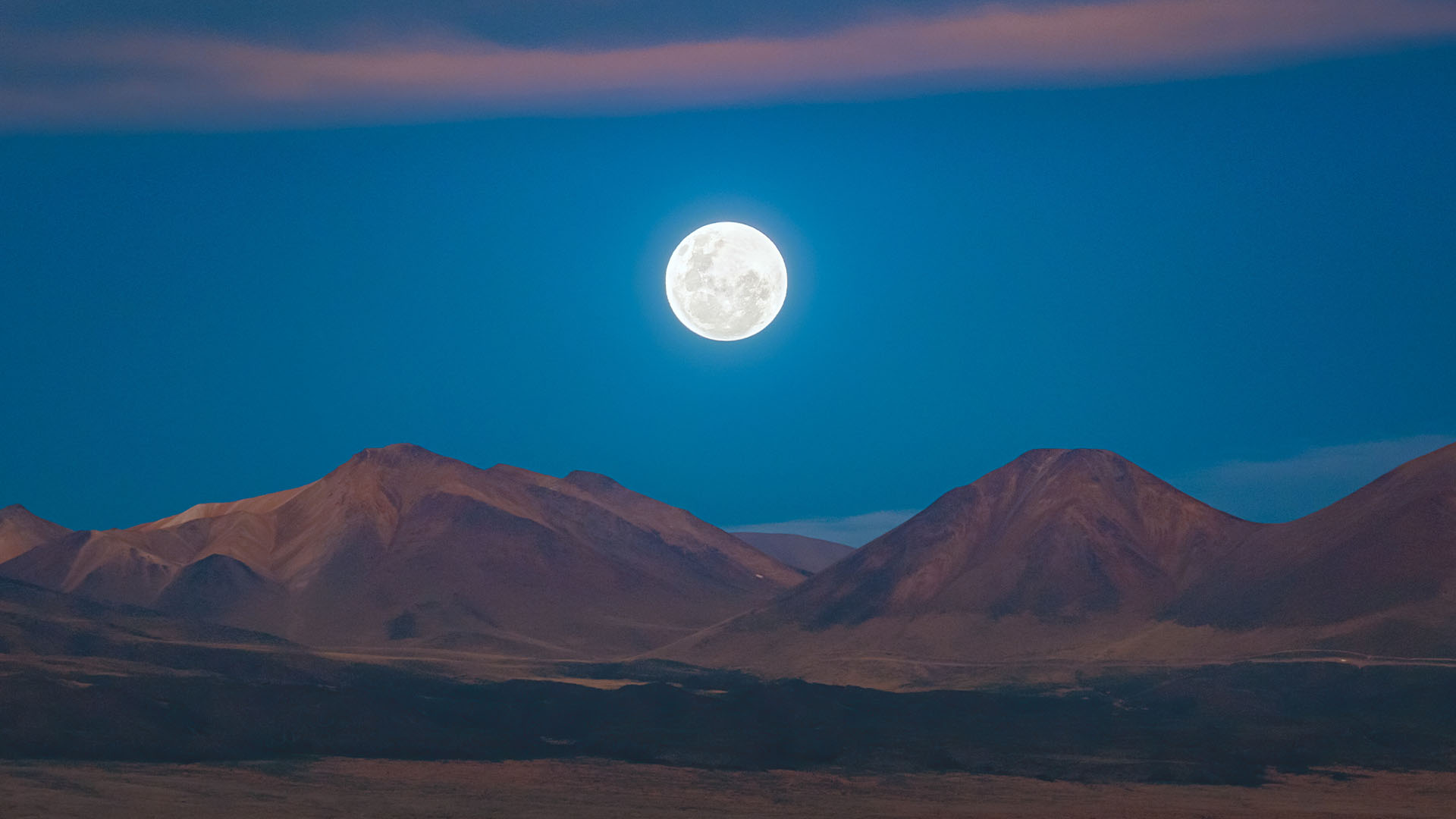February's full 'Snow Moon' rises this weekend. Here's why it's one-of-a-kind.
February's 'Snow Moon', the second full moon of 2024, will be the farthest from Earth this year and will appear the smallest in the sky when it rises on Saturday (Feb. 24).

February's full moon, the second of 2024, will rise in a blaze of color and light this weekend — but don't expect a giant orb in the twilight sky. Thanks to orbital mechanics, the "Snow Moon" will be the smallest of the year as it rises during dusk on Saturday (Feb. 24).
The exact opposite of a supermoon, this Snow Moon will turn full when our natural satellite's orbit is close to its farthest point from Earth in its slightly elliptical monthly orbit.
Despite its smaller size, the Snow Moon, also known as the Hungry Moon, Storm Moon, Wolf Moon and Candles Moon, according to NASA, promises a breathtaking display. Its appearance will signal the start of the Lantern Festival, also called Shang Yuan or the Yuan Xiao Jie, which is part of the Chinese New Year celebrations.
Although it will technically turn full during the day in North America — at 7:30 a.m. EST — the best time to see it will be at moonrise later that day. You can find the exact time for your location using a moonrise and moonset calculator.
Related: Undiscovered 'minimoons' may orbit Earth. Could they help us become an interplanetary species?
Look for the Snow Moon rising in the east just after sunset on Saturday, when it will glow a deep orange color due to Earth's atmosphere. For the best view, find a high spot facing east with a clear horizon. Unaided eyes are ideal for watching a full moonrise, but binoculars will enable you to see craters and other features on the lunar surface. The moon will also appear bright and full on Friday and Sunday, as well.
After the "Snow Moon," the following full moon will be the "Worm Moon" on March 25, which will drift into Earth's shadow and cause a slight penumbral lunar eclipse. That will put the moon in position to cause a total solar eclipse two weeks later on April 8, which will be best seen within a narrow 115-mile-wide (185 kilometers) path of totality stretching across northwest Mexico, 15 U.S. states and six Canadian provinces.
Sign up for the Live Science daily newsletter now
Get the world’s most fascinating discoveries delivered straight to your inbox.

Jamie Carter is a freelance journalist and regular Live Science contributor based in Cardiff, U.K. He is the author of A Stargazing Program For Beginners and lectures on astronomy and the natural world. Jamie regularly writes for Space.com, TechRadar.com, Forbes Science, BBC Wildlife magazine and Scientific American, and many others. He edits WhenIsTheNextEclipse.com.










